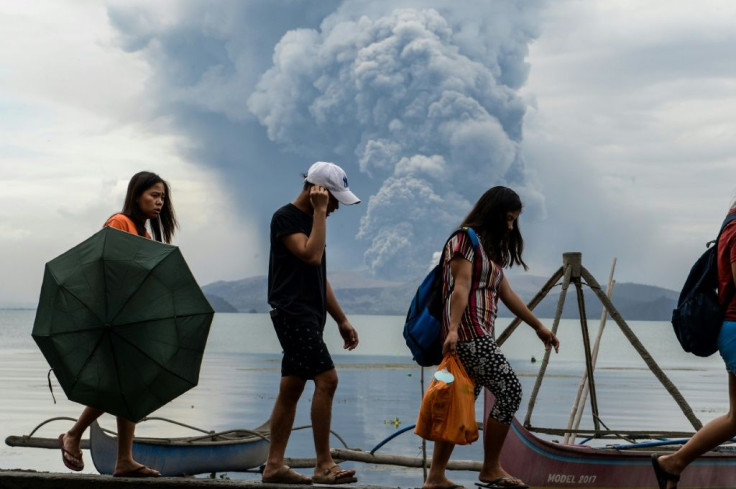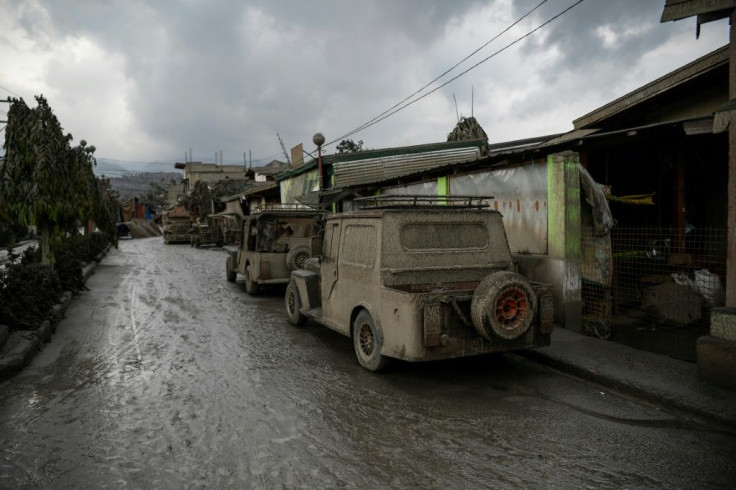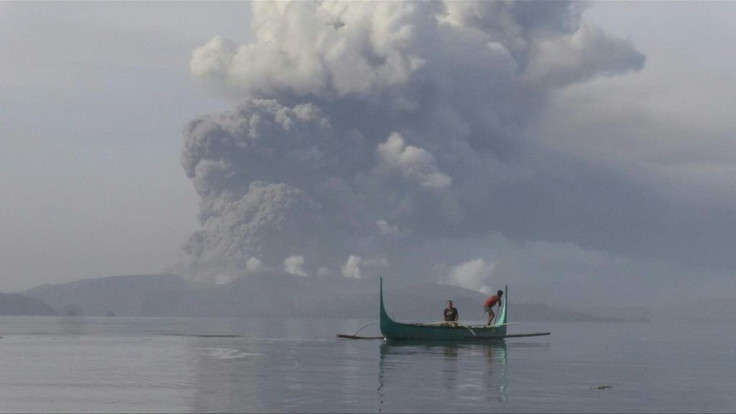Tens Of Thousands Face Uncertainty As Philippine Volcano Spews Lava
Taal volcano in the Philippines could spew lava and ash for weeks, authorities warned Tuesday, leaving tens of thousands in limbo after they fled their homes fearing a massive eruption.
The crater of the volcano exploded to life with towering clouds of ash and jets of red-hot lava on Sunday, forcing those living around the mountain south of Manila to rush to safety.

Many people abandoned livestock and pets as well as homes full of belongings after authorities sounded an alert warning that an "explosive eruption" could come imminently.
"We left everything apart from what we're wearing," said Robert Cadiz, a 47-year-old fisherman among some 30,000 who took refuge in shelters. "We were terrified."

Gerald Aseoche, 30, who left with his four young children and a few possessions, has missed work to stay with them as the volcano belches out lava, and earthquakes tied to the eruption rattle the region.
"I am hoping this won't go on too long because I will lose my job if I can't report to work immediately," Aseoche, a house painter, told AFP at an evacuation centre.

Taal is one of the most active volcanoes in a nation hit periodically by eruptions and earthquakes due to its location on the Pacific "Ring of Fire" -- a zone of intense seismic activity.
Philippine Red Cross Chairman Richard Gordon warned that the group was "preparing for the worst" and urged people to keep away from the volcano.

"Bring your animals and livestock to evacuation centres if you must," he added.
The Taal eruption has been putting on a stunning and terrifying display, including an ash cloud illuminated with lightning bolts. It shot dark-grey columns 800 metres (half a mile) in the sky.

Renato Solidum, head of the Philippines' seismological agency, said Taal's previous eruptions have lasted as long as months so it was impossible to predict an end to the current activity.
However, he said the alert warning of a potentially catastrophic "explosive eruption" may remain in place for weeks, depending on developments.
"We have a protocol of waiting for several days, sometimes two weeks, to make sure that indeed... volcano activity has essentially stopped," he told AFP.
The volcano dramatically burst with activity on Sunday, shooting massive plumes of ash 15 kilometres (nine miles) into the sky that then rained down on the region.
Falling ash pushed aviation officials to temporarily shut down Manila's main international airport, forcing the cancellation of hundreds of flights and stranding tens of thousands of travellers.
Ninoy Aquino International Airport resumed reduced operations on Monday and was gradually recovering on Tuesday, but a backlog of cancelled flights resulted in ongoing pain for travellers.
The country's most powerful explosion in recent years was the 1991 eruption of Mount Pinatubo, about 100 kilometres northwest of Manila, which killed more than 800 people.
© Copyright AFP 2024. All rights reserved.











